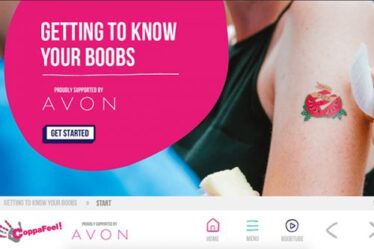
How To Find The Ideal LMS For Health Sector Mission Critical Training
If you work in healthcare, time is at a premium. Time with patients, time with family, time to yourself. Where are you supposed to find time for training? And yet, you expect your healthcare employees to regularly recertify, map against competencies and be familiar with all the latest techniques and protocol. So, when it comes to health sector mission critical training, they simply have to find the time. But you can’t expect them to master complex LMS software, along with the new skills you need to obtain. That’s where an appropriate, user-friendly LMS comes in. One that engages and informs healthcare employees…and makes them work smarter.
Making An LMS Work In A Healthcare Environment
Choosing to invest in a new LMS is a complex decision in any organization. In healthcare, however, the challenge is multiplied. Not only are budgets stretched beyond capacity, but your employees are not motivated to learn continuously due to time pressure. To make a business case for LMS investment, you must know what you are looking for from your system. The biggest win will come from compliance reporting and the ability to minimize the risk of skills gaps. Here are 6 tips to find the best LMS for your health sector mission critical training.
1. Verify That The User Interface Is Intuitive And Customizable
Top of your shopping list when choosing a new LMS is the capability to plug-and-play. Therefore, no training should be necessary for the healthcare employee to navigate the system or take the online training course. An intuitive User Interface is the absolute minimum requirement for your new LMS. Next, you should be able to customize the design such that the software blends seamlessly with other systems your healthcare employee uses. Sign up for an LMS free trial or demo and put the User Interface through its paces. In fact, you should use it to design a sample project to ensure that your L&D team can use the platform effectively to develop and deploy online training content. And that your healthcare employees are able to navigate the system with ease.
2. Make It Multiplatform-Friendly With A Responsive System
Allow your healthcare employees to take their training with them, anywhere. An LMS that supports all possible devices in your environment will be essential in changing the mindset of time-poor learners. If they can complete an essential health sector online training course on their phone, they don’t need to wait for communal resources to become available. Your healthcare employees simply don’t have the luxury of sitting behind a PC to train at a dedicated terminal. There are patients who need quality care, or emergency situations that require their immediate attention. Hence, a responsive system allows you to deploy mission critical online training resources immediately, when your employees need them the most to save lives and prevent in-house catastrophes.
3. Ensure The LMS Supports Competencies-Based Training
An LMS that easily enables a competency-based approach is key to ensuring your employees don’t waste any time and possess the necessary abilities, as well. You will need to complete a full skills gap assessment for each individual, and be able to track that. As well as implement a certification online training program to verify that they are in compliance and understand their work responsibilities/roles. For example, that your nurses are aware of the evacuation protocols. Or that they have the skills and experience to handle a disgruntled patient who is refusing care.
4. Invest In An LMS That Provides Personalized Learning Paths
An individualized learning journey enables your healthcare employee to manage their own time. This should link the core competencies they require with the skills they must develop. The relevant online training courses should be listed, tracked and reported on. Personalized learning paths are essential for health sector mission critical training because each job role and position requires unique skills and knowledge. For instance, employees who interact with patients may have to deal with life-threatening emergencies on a daily basis. As such, they require different moment of need resources and courses than their co-workers in the records department.
5. Look For A Tool With A Broad Range Of Online Training Assessment Types
There is such a broad learner base in healthcare that it is more important than ever to accommodate different learning preferences. Don’t over-complicate any online training courses; make sure you provide different types of online training assessments. A system with a built-in assessment engine gives you the power to evaluate employees at an individual level. Then provide them with follow-up support resources. You can also verify that they meet company standards and identify areas for improvement early on. Instead of disclosing crucial gaps on the job, when their mistakes can mean the difference between life and death.
6. Test Out The LMS Reporting Capabilities
Your LMS must enable fast, accurate reporting. The biggest demand on an LMS that supports health sector mission critical training is that compliance can be tracked. This will be a major part of your business case for LMS investment. Your LMS reporting should be pro-active and highlight relevant compliance issues or competencies gaps. This will help the service to avoid risk and will save money on legal or skills issues. However, it’s not enough to be measuring completion: make sure you follow each of the other 5 tips. Design your system and your health sector mission critical training wisely to appeal to the specific requirements of your healthcare learner. Taking and passing an online training course is not a measure of knowledge or skills absorption and retention.
Conclusion
In healthcare L&D, you might be forgiven for feeling that rolling out an online training program is like pushing water uphill. Healthcare employees that can’t be pinned down; who simply don’t have the time to dedicate to the training they need to complete. Actually, your job is twofold. Firstly, to make them understand why the health sector mission critical training is worth the effort (aside from it being mandatory). Secondly, to make your LMS so easy to use that they don’t have to give the software a second thought. Therefore, concise, relevant and engaging online training content is essential; individual learning paths and learning objectives are just the same. Take out the drudgery and necessity, and replace with interactivity and real-life scenarios.
What’s the point of an LMS if no one gets any benefit from using it? Does your current LMS pass the test, or is it time to look for a new system that can deliver a better User Experience? Our exclusive directory has the top Learning Management Systems for healthcare online training.



